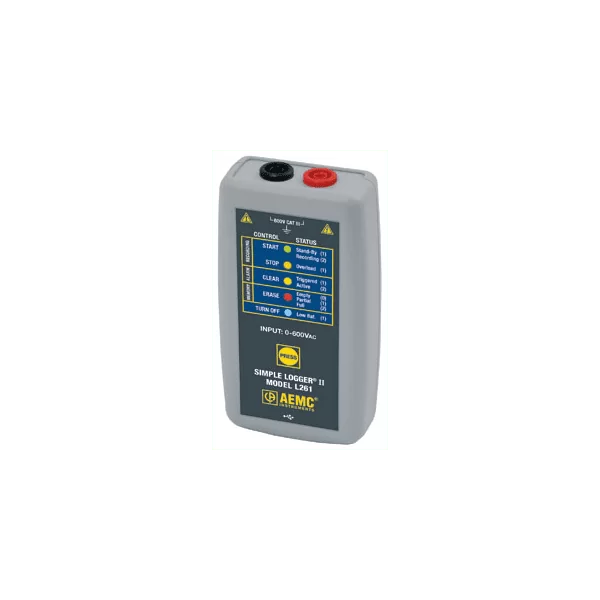Description
The AEMC L261 TRMS AC Voltage Data Logger is a one channel, battery-powered recording device for voltage measuring, monitoring, and troubleshooting. Line tracking is performed such that 64 samples over one line cycle are taken. Frequency tracking is performed over the range of ±2Hz around the nominal line frequency (50 or 60Hz). Harmonic measurements are calculated from these 64 samples (Harmonics are only available from the Simple Logger® II Control Panel within the DataView® software).
The AEMC L261 TRMS AC Voltage Data Logger records True RMS at a rate of up to eight times per second. The measurement process is performed no more than eight times per second. TRMS calculations are performed on a single line cycle. This means that the input(s) are ignored between measurement intervals. The main advantage of the logger is its ability to perform a variety of recording tasks with easy and intuitive setup from a computer using DataView® software.
Analog information on the input is sampled and converted to a digital signal. This digital signal is processed and stored along with scale and time information. An optically isolated Universal Serial Bus (USB) port provides for the transfer of data from the instrument’s internal memory to the computer for analysis.
Common applications are surge and sag recording, long-term supply monitoring, industrial and commercial monitoring, voltage harmonics, machine monitoring and finding intermittent voltage problems.
- Surge and Sag recording
- Long-term supply monitoring
- Industrial, commercial, residential monitoring
- Monitor voltage harmonics
- Find intermittent voltage problems
- Machine monitoring


